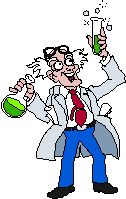Writing Molecular Formulae
A molecular formula shows the kind and number of atoms in a molecule. For some molecules, the formula provides a hint of how the atoms are arranged.

In spite of the fact that molecules are far too small to be seen, we have several ways of drawing pictures of them. Scientistis frequently draw diagrams called structural formulae to illustrate how the atoms are arranged in a molecule. This can be helpful when trying to visualize how different molecules will react when they are combined.
Drawing Pictures of Molecules

Three Dimensional Molecular Models
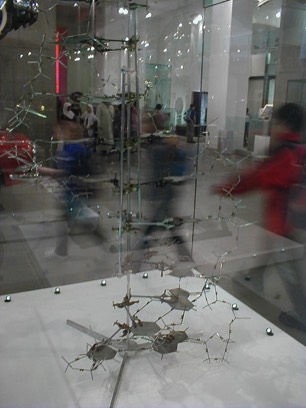
The structural formulae of macromolecules are often so complex that they can’t be drawn in two dimensions. Early pioneers of molecular biology built models from wood, wire and other materials. The image to the left is a photograph of the original DNA model built by James Watson and Frances Crick in 1953. It is now on display in the National Science Museum of London.
Often molecular models take the form of stick and ball models in which atoms of different kinds are represented by colored balls with the bonds connecting them represented by sticks.
Such models are very useful in understanding the functions and interactions of the large molecules found in living cells (as long as you don't think this is really what they look like).
The advance of computer graphics has facilitated the construction of three dimensional models of complex molecules that simplify and illustrate their structure and shape.
There can be many ways to represent the same molecule. The first two models in the top row below represent the molecular structure of adenosine triphosphate, a crucial molecule for energy transfer that is found in all living things. The third molecule in that row is a 3D rendering of an alanine peptide. (Alanine is one of the amino acid monomer that makes up proteins.) It is been enhanced by the addition of a cloud to represent the region of the molecule that is hydrophobic (water repelling).
The model on the upper right is a large, unidentified protein. Each ball's color represents a different type of atoms.
Computer animation has added another way to understand the structure of very large molecules in three dimensions such as the revolving DNA model in the lower row right and the animated testosterone molecule next to it.
Some molecules are so large and so complex that only virtual computer models are possible and even those models have a cartoonish look to them.
These models may not look simple to the student new to the idea of macromolecules but they are a boon to high school and college students who have advanced to organic and biolchemistry courses. Many students own their own ball and stick kits to help them understand the shapes and interactions of organic molecules (far right). These kits are available from scientific supply companies and often college and university book stores.
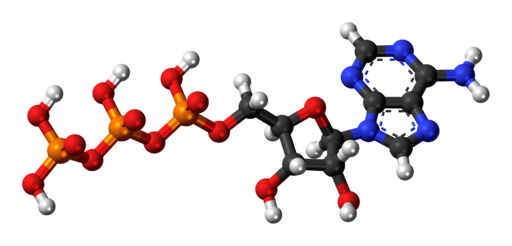
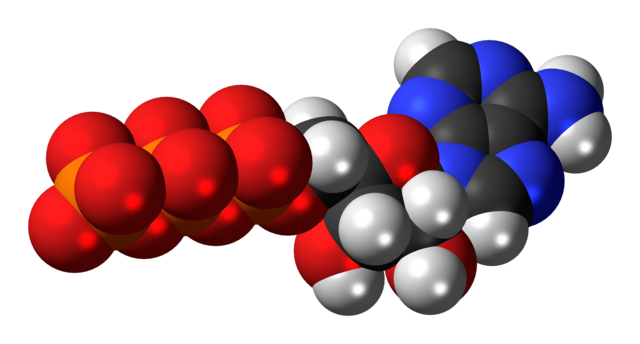
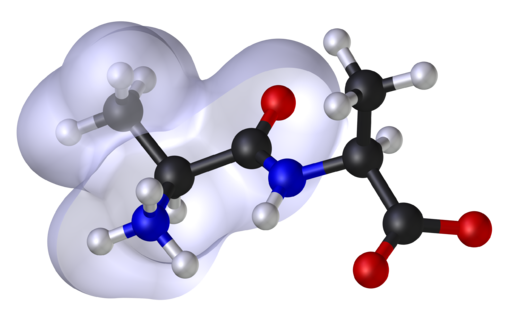

A basic ball and stick model of ATP
By Fuse809 (QuteMol) [Public domain], via Wikimedia Commons
A different rendering of the ATP molecule
By Jynto [CC0], via Wikimedia Commons
A model of a polyalanine molecule showing its hydrophobic region.
By derivative work: Dhatfield (talk) MM_PEF.svg: Edboas (MM_PEF.svg) [CC BY-SA 3.0 (http://creativecommons.org/licenses/by-sa/3.0)], via Wikimedia Commons
A ball and stick model of a large, complex protein
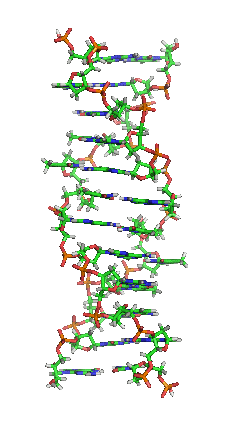
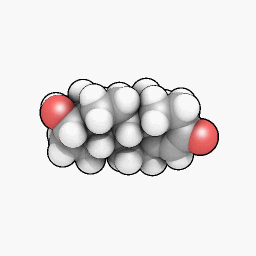
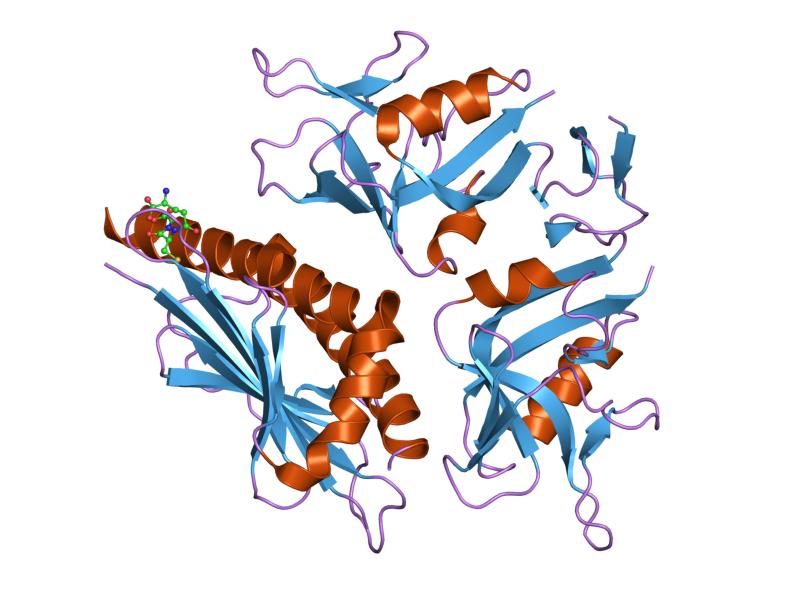

An Animated molecular model of DNA
Zephyris at the English language Wikipedia [GFDL (http://www.gnu.org/copyleft/fdl.html) or CC-BY-SA-3.0 (http://creativecommons.org/licenses/by-sa/3.0/)], via Wikimedia Commons
An animated model of testosterone
D Dinneen at English Wikipedia [CC BY-SA 3.0 (http://creativecommons.org/licenses/by-sa/3.0) or GFDL (http://www.gnu.org/copyleft/fdl.html)], via Wikimedia Commons
A computer generated model of a protein molecule that seeks only to illustrates the active functional aspect of the molecule.
Courtesy of Commons http://www.ebi.ac.uk/
Student assembling a molecular model from a ball and stick kit.
By Ariana Rose Taylor-Stanley from Bainbridge Island, United States (Creation) [CC BY 2.0 (http://creativecommons.org/licenses/by/2.0)], via Wikimedia Commons

A basic ball and stick model of ATP
By Fuse809 (QuteMol) [Public domain], via Wikimedia Commons

A different rendering of the ATP molecule
By Jynto [CC0], via Wikimedia Commons

A model of a polyalanine molecule showing its hydrophobic region.
By derivative work: Dhatfield (talk) MM_PEF.svg: Edboas (MM_PEF.svg) [CC BY-SA 3.0 (http://creativecommons.org/licenses/by-sa/3.0)], via Wikimedia Commons

A ball and stick model of a large, complex protein

An Animated molecular model of DNA
Zephyris at the English language Wikipedia [GFDL (http://www.gnu.org/copyleft/fdl.html) or CC-BY-SA-3.0 (http://creativecommons.org/licenses/by-sa/3.0/)], via Wikimedia Commons

An animated model of testosterone
D Dinneen at English Wikipedia [CC BY-SA 3.0 (http://creativecommons.org/licenses/by-sa/3.0) or GFDL (http://www.gnu.org/copyleft/fdl.html)], via Wikimedia Commons

A computer generated model of a protein molecule that seeks only to illustrates the active functional aspect of the molecule.
Courtesy of Commons http://www.ebi.ac.uk/

Student assembling a molecular model from a ball and stick kit.
By Ariana Rose Taylor-Stanley from Bainbridge Island, United States (Creation) [CC BY 2.0 (http://creativecommons.org/licenses/by/2.0)], via Wikimedia Commons

